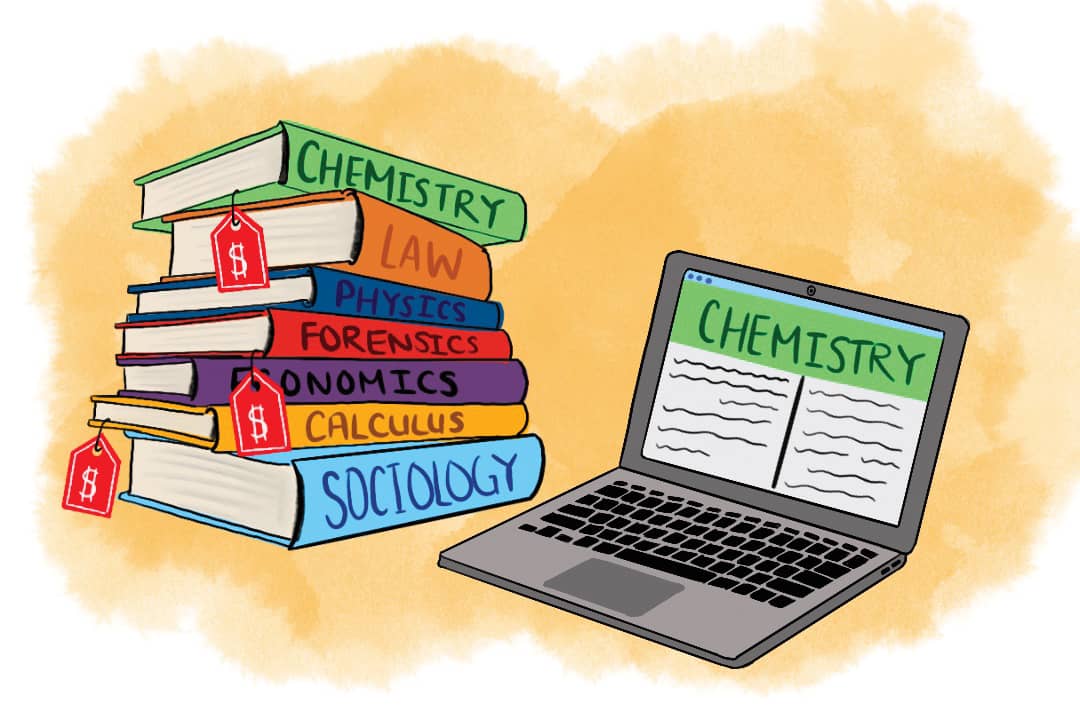(Photo courtesy of: The Varsity) “Students struggle to afford textbooks as well as affording classes, housing and everything else.)
Jocelyn Dean
Connector Contributor
The high cost of textbooks has become a major debate across UMass Lowell. Many financially concerned students face hardships at the beginning of each semester, worrying if they will be able to purchase their necessities. Paying hundreds of dollars for textbooks is not ideal, especially when not all of its content is used for their respective courses. Students are left frustrated and concerned as a result. So, because of this issue, UMass Lowell has been promoting open educational resources (OER) and low-cost textbooks. This can ease worries, but oftentimes, students do not know how much their books will cost until the first day of classes. However, the university is implementing new ways of resolving this issue.
The OER Task Force members, including administrators, faculty and SGA (Student Government Association), have worked to create a new system when registering for classes for the upcoming spring semester. Donna Mellen, the UMass Lowell representative to the Massachusetts Department of Higher Education OER Advisory Council, describes this system and said, “[W]hen students register for spring ’24 classes, they’ll be able to filter for attributes in SIS for courses that have no cost textbooks or low cost—$50 or less.” This is a huge step in making resources accessible to all, and it will continue to grow in the coming semesters.
However, since this system is brand new, not all courses will be updated with their textbook costs. Lots of faculty have already self-reported if their course requires students to pay for materials, but it is still a growing system and will take a few semesters to catch up. Even then, students should not eliminate courses from their schedule based on the current state of the system alone. Julie Nash, vice provost for Academic Affairs, said, “[T]here will be courses that are low cost and no cost that are not fed into the system yet.” But, if a student needs a course that requires a textbook, there are other options.
For over a decade, people have worked to make higher education accessible for all by lowering the costs of textbooks and creating more OERs. Many library staff members put together course packets to try and reduce the cost of textbooks, so students do not have to struggle financially. Over the years, more educational material has become available, and the quality has improved greatly, meaning professors are more open to what they use in the classroom.
Nash gives some recommendations on what a student should do if they are unable to pay for a required textbook, with the first being talking to professors about whether they might have extra books and resources to help the student out for their respective courses. For another option, Nash said, “[I]f they [students] can’t afford their books, they can reach out to financial aid and get some bookstore vouchers.” This can reduce the cost of books to help those financially struggling. The last thing anyone wants is for a student to have to drop a course due to financial problems, so reaching out for help can really be substantial.
The biggest activists for lowering textbook costs are the students themselves. Students were the force that drove this initiative. A student who goes up to their professor and thanks them for choosing a low-cost option or asks if lowering the costs for textbooks could be considered can be the biggest change. The UMass Lowell faculty is willing to listen to their students; the more vocal advocates are for this issue, the more success there will be in making changes.



